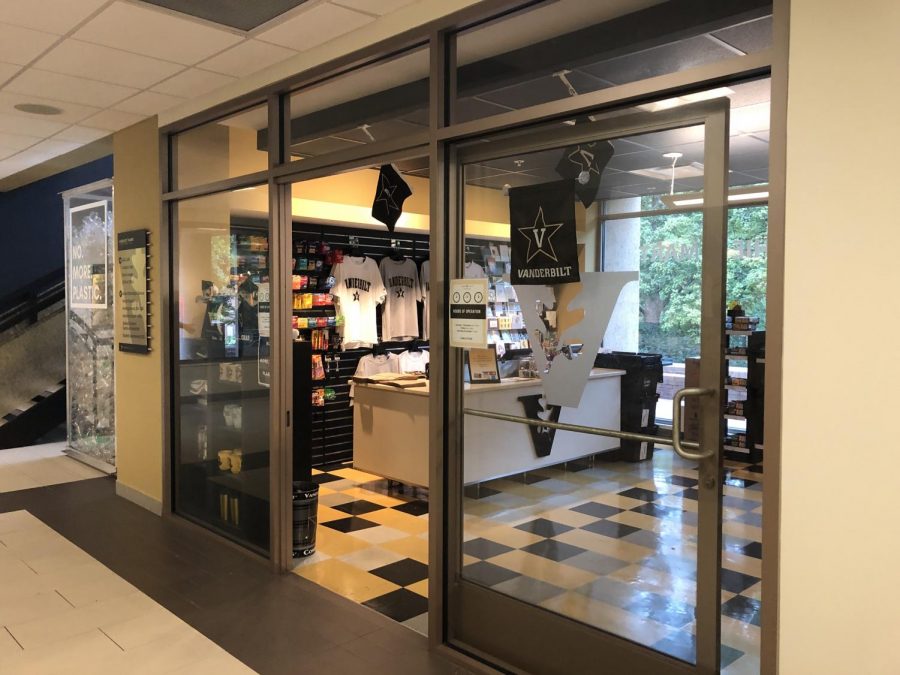A few weeks ago an Econ 1010 test snuck up on me. The morning of, I realized that I didn’t have a calculator. I ran to the Rand Munchie and picked up a TI-30X scientific calculator. I was anticipating about a ten dollar charge – prices on Amazon for similar calculators range from about nine to fifteen dollars. I was unpleasantly surprised when I swiped my Commodore Card and a figure twice what I anticipated popped up on the cash register display: twenty-two dollars.
This isn’t an isolated incident. Essentials at Vanderbilt, from school supplies to food to personal hygiene products, regularly cost much more than would be anticipated in a competitive marketplace. Just take the example of yogurts. Junior Dan Gulotta told me, “I think it’s ludicrous how a single yogurt is 2.99 at Munchie but a four-pack at any reasonably priced store is less than that. It’s literally like a 300 percent markup.”
I know the knee-jerk reaction to such complaints, because I get them all the time: It’s just a few bucks here and there – so what? I’d resonate with such a complaint if I were talking about upcharged food prices at Predators games. But Vanderbilt’s price markups are fundamentally different: I live on campus, whereas I go to Bridgestone. I can eat before I go to a game or a concert; I can’t avoid costs on campus. And while markups on calculators and yogurt don’t seem like a huge deal to a lot of people, they create a lot of stress for students who aren’t in the most financially stable situations.
My dad lost his cushy Manhattan job a few years back, so my family no longer has a stable employer-based health insurance program to rely on. My mom is buying insurance on the private market for $30,000 a year while my dad had to enroll in Medicare and Social Security. My family needs Vanderbilt’s help to get me through college. I am so thankful for Opportunity Vanderbilt, which has allotted my family largely sufficient need-based financial aid so I can afford to go here. This program helps manifest Vanderbilt’s status as a leader in financial inclusivity. Unfortunately, this commitment to meeting financial needs stops once a student walks on campus.
The worst part is that this price gouging isn’t even a good way for Vanderbilt to increase its revenues! Just a quick glance at the 2018 Vanderbilt Financial Report reveals that profits from such auxiliary sales make up a tiny percentage of Vanderbilt’s money flow when compared to endowments, tuition and grants and contracts.
I currently have $144 in my Chase Account. A few markups on food and folders are often the difference between a night out and a night in. While a lot of kids at Vandy don’t have to worry about such costs – nearly sixty percent of students come from the top ten percent of income earners – there are plenty of people like me who do. Vanderbilt shouldn’t forget about us.
Maxwell Schulman is a junior in the College of Arts and Science. He can be reached at maxwell.r.schulman@vanderbilt.edu.




Betty • Nov 5, 2019 at 2:56 am CST
My son goes to a different college, and the prices at the campus bookstore and convenience store are also way higher than off campus stores, even for basics like pens and notebooks. That calculator would be around $10 at an off campus office supply store. It’s outrageous that on-campus prices are so inflated.
Emily • Oct 24, 2019 at 6:47 pm CDT
Wow, what a gratuitously snotty comment. Yes, you’re paying for convenience, but that’s a pretty high premium. Also, these are students, who are not usually full time workers and thus have less discretionary income.
PeterTx52 • Oct 19, 2019 at 4:42 pm CDT
“I was unpleasantly surprised when I swiped my Commodore Card and a figure twice what I anticipated popped up on the cash register display: twenty-two dollars.”
apparently you forgot that you paid for the convenience of being able to purchase the calculator right then rather than wait for Amazon to deliver it to you a day later. not sure what Econ coursed you’ve taken but apparent you don’t understand market economics